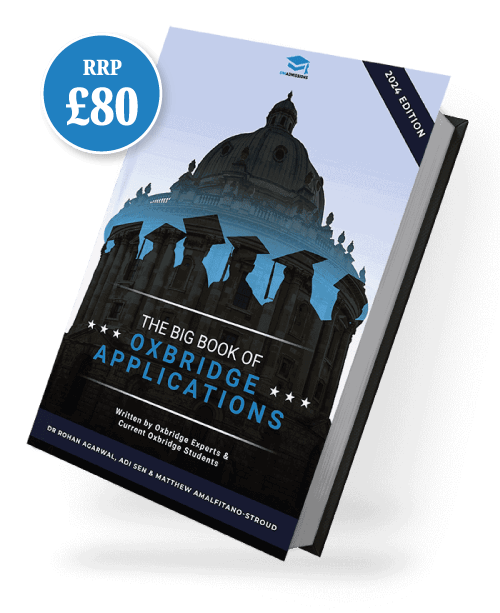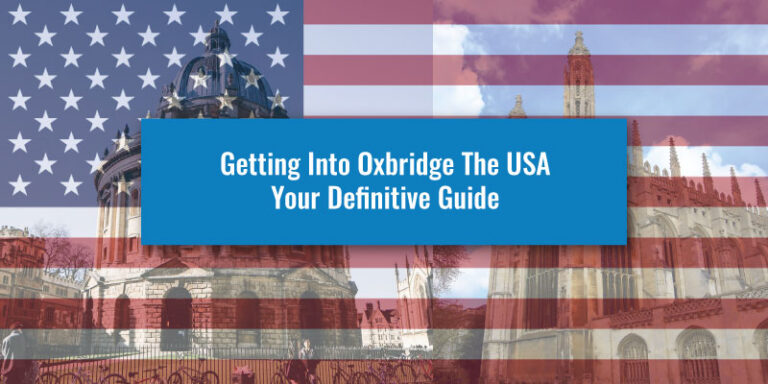The United Kingdom and the United States of America house some of the highest-rated and most iconic universities in the world. However, despite this common factor, there are far more differences between how these institutions are run in the two nations.
Everything from teaching to course structures and applications is vastly different, so this guide is dedicated to exploring universities in these two places that are run differently. If you’re not sure where you want to apply to yet, this guide may help you in your decision-making process, so let’s get started.
Want to skip to a specific topic? Select a button below or keep scrolling to read the full guide.
US vs UK Universities: The Basics
Before we get into the key differences, there are a couple of very broad differences to cover.
University or College?
While both the UK and US use the term “university” to describe higher education, the word “college” has different meanings in each country. In the USA, these two words can sometimes seem to be used interchangeably, but they actually mean different things, just like in the UK.
In the US, a college refers to smaller institutes that specialise in certain fields, while universities are larger, have a wider range of subjects taught and are more known for awarding master’s and doctoral degrees.
In the UK, the difference is also similar, but colleges and universities are not seen as being the same level of education. College degrees are typically positioned as an alternative to A-Levels/Scottish Highers (the highest forms of school assessment in the UK), usually offering BTEC or T-Level qualifications rather than a Bachelor’s degree, which is the standard form of degree offered at an undergraduate level in the UK.
However, colleges can be fairly broad in what they offer, with some offering apprenticeship courses, part-time courses, foundation degrees and University-level degrees. Courses can range from 1 – 3 years, unlike US college courses which typically last 2 or 4 years.
In this guide, we’ll only be focusing on UK universities rather than colleges, although US colleges will still be relevant to the discussion.
How Many Universities Are There In The US and UK?
Secondly, it’s important to understand the significant difference in how many institutions there are in each country.
How Many Universities in the US
As of 2022, multiple sources, including the U.S. Department of Education have counted close to 4,000 universities and colleges across the United States. However, this figure includes graduate schools and smaller-scale colleges as well as standard universities that offer full undergraduate degrees. In terms of universities that offer four-year degrees, the total figure is closer to 1,400.
How Many Universities in the UK
In 2024, there were over 160 universities recorded in the UK, roughly 10% of what can be found in the US. However, this figure mainly accounts for standard universities. When considering other options for higher education, some sources have counted at least 400 different institutions in the UK.
The reason for this difference should be fairly clear; the United States is far bigger than the UK. Even considering this though, the difference is still somewhat un-proportional as the UK has an overall population of just under a quarter of the US. However, the education industry in the US has grown much faster, especially when considering all the different types of universities available.
Now that we understand these key pieces of information, it’s time to take a closer look at how universities in each country operate.
UniAdmissions triples your chances of earning your Oxbridge offer
At UniAdmissions, we’ve spent over 10 years preparing students for every step of the Oxbridge admissions process and have found a winning formula to boost your chances of success. With over 55% of our students earning their place, we know that our methods work.
Discover our Oxbridge Full-Blue Programmes below and find out how you can enrol and triple your chances of success.
US vs UK: University Structure
The first key difference between US and UK universities is how they are fundamentally operated and structured. This primarily comes down to the types of universities available in each country, which impact which courses are taught, how they’re taught and how much it costs to attend.
US University Structure
In the United States, there are various types of universities that operate differently from one another. These include:
Public Universities
Public Universities/Colleges, also known as state universities, are institutions that are funded by the government to some degree. This generally doesn’t impact how classes are taught, but they do tend to have larger class sizes due to the lower tuition fees charged to students. There are approximately 1,950 public universities and colleges in the US which accounts for the highest percentage of US college admissions.

Private Universities
Private universities don’t receive any form of funding from the government for teaching, meaning they are considered independent. Private universities can be either non-profit, which re-invest tuition fees into university operations and research funding, and for-profit, which operate like businesses and have shareholders to account for.
Non-profit private universities will generally be governed by a board of trustees and will receive additional funding from private donations and endowments. For-profit universities are governed by any shareholders that have a stake in the business, including individuals and corporations. Funding comes from tuition fees but actual funding for teaching will be variable based on profitability.

Liberal Arts Colleges
Liberal Arts Colleges are a smaller kind of institution that specialises in specific areas of study, primarily science and liberal arts. This type of university is unique as it has a stronger focus on student freedom, allowing them to specialise later on in their course (we’ll explain this in more detail in the next section).
Liberal Arts Colleges tend to be private non-profit institutes, but the approach to teaching is different enough to class it as its own type of university. There are over 200 dedicated liberal arts colleges in the US, but many other universities provide liberal arts programmes that emulate the style of teaching.
Community Colleges
Community Colleges are primarily state-funded and known for offering shorter courses at an undergraduate level. These are known as “associate’s degrees” which take two years to complete, versus the the four years required for a standard course in the US. While these degrees can be used as a stand-alone qualification, many use them as a supplement for a full bachelor’s degree attained at a standard university.
These colleges are typically quite small and are generally cheaper to get into. They tend to be run in a similar manner to public universities, with some colleges being grouped into state systems. There are roughly 1,160 community colleges in the US currently.
These are the primary kinds of universities you’ll see in the US, so let’s see what’s available in the UK.
UK University Structure
Unlike the US, the UK doesn’t really have different types of major universities available (partly due to how few there are). The operation of universities in the UK has changed a lot as the first universities were established nearly 1,000 years ago, but the current system has been in place since 1992, when “polytechnics” (a former educational system that focussed on STEM) were abolished.
Universities in the UK are almost all independent bodies that are legally registered as charities. They receive funding from tuition fees, endowments and some level of state funding (though this was much greater pre-2012). UK institutes have to become “recognised bodies” in order to award degrees, which are controlled under UK law.
There are five exceptions to the standard university system, as they are considered private universities. Two of these are still registered as charities, making them non-profits:
The other three are all for-profit private universities, meaning they do not qualify as charities:
In some cases, you may see universities referred to as one of the following:
These aren’t really official university classifications and are more informal groups that are based on the era in which a university was founded. While the age of a university may have some impact on student life at a university (architecture, traditions, etc), they don’t have any impact on the legal status of the institution or the degrees it offers.
Within the standard university system, there’s also some variance in how universities are run.
Specialised Universities
Not all universities offer a wide range of subjects and instead focus on specific areas. Some of these are still fairly broad, such as Imperial College London’s focus on STEM degrees, while others are dedicated to a specific subject. The most common of these subject-dedicated universities are medical schools. Examples include St.Georges, Hull York and Brighton & Sussex.

Collegiate Universities
Many universities in the UK operate as one whole body, with different departments that handle teaching for specific subject areas. However, an older form of university that’s still operating today is collegiate universities. The universities house individual groups known as colleges (different from the previous definitions outlined), which each act as semi-individual bodies, though still a part of the university as a whole.
Colleges are responsible for a large amount of a student’s life at a collegiate university, including their initial admission, accommodation, social events and some elements of teaching. While these universities still have subject departments that handle lectures and examinations, colleges play a large role in how students are taught within smaller group sessions.
The most famous examples of collegiate universities are the University of Oxford and the University of Cambridge, which have each run under this system for hundreds of years. However, other examples include Durham, Lancaster and Queen’s University Belfast.
The closest comparison to the collegiate system in the US would be fraternities and sororities. However, these organisations are far less significant as they are primarily for social purposes and don’t play a major role in a student’s actual education.

The Open University
The Open University Is a unique case in the UK as it’s a nationwide institute that’s spread across multiple campuses while emphasising remote teaching. One of the major selling points of the university is the lack of high entry requirements and emphasis on careers-based courses. Despite these unique elements, The Open University is considered a standard university that offers proper Bachelor’s degrees, as well as offering short courses that offer Certificates/Diplomas of Higher Education.

Beyond these official statuses for universities in the US and UK, there are also a handful of university groups to consider that generally relate to reputation, prestige or admissions policies:
Ivy League Schools
In the US, Ivy League schools are considered the top class of education (excluding some outliers like MIT). This is a group of eight universities that have amassed a reputation of producing highly successful alumni, housing cutting-edge research facilities and fostering an incredible environment for athletes. The eight Ivy League schools are as follows:
These are all private non-profit universities that have extremely high entry standards due to the demand for places and the prestige they hold. They also stand as some of the oldest universities in the country.

Historically Black and Women’s Colleges
These are two types of universities that are technically separate from the previously discussed categories. As the names suggest, these are institutions designed to serve African Americans and women exclusively, although HBCUs currently admit students of other races in smaller quantities. In the UK, there are no examples of universities specifically created for either demographic, although the University of Cambridge does house several women-only colleges.
Oxbridge Universities
Meanwhile, in the UK, there are a few distinct groups of universities that hold a similar level of prestige. Perhaps the most well-known of these is the duo of the University of Oxford and the University of Cambridge – known together as Oxbridge. These are two of the oldest universities in the world and have a rich history spanning nearly 1,000 years.
Other than just being old, they also have the reputation of being two of the highest-ranked universities in the world, frequently appearing in the top five of world rankings. Like Ivy League, these universities are incredibly hard to get into, with strict admissions criteria and a more in-depth admissions process than most other UK universities.
G5 Universities
Alongside Oxbridge, three other UK universities are often grouped as some of the best in the country to form “the golden circle”. These three additional universities are:
This isn’t an official partnership between the universities, but it is still often seen as important for many applicants both inside and outside of the UK.
Russell Group Universities
A much more official group comes in the form of the Russell Group universities in the UK. The Russell Group is an organisation that represents 24 of the top universities in the country and has a heavy focus on research. They aim to ensure that all of the universities under their banner maintain the high standards and level of success that helped them build their reputation in the first place. Here are the universities included within the Russell Group:
| University of Birmingham | University of Bristol | University of Cambridge |
| Cardiff University | Durham University | University of Edinburgh |
| University of Exeter | University of Glasgow | Imperial College London |
| King’s College London | University of Leeds | University of Liverpool |
| London School of Economics & Political Science | University of Manchester | Newcastle University |
| University of Nottingham | University of Oxford | Queen Mary University of London |
| Queen’s University Belfast | University of Sheffield | University of Southampton |
| University College London | University of Warwick | University of York |
Due to their reputation, Russell Group universities are generally more difficult to get into, although they don’t all operate admissions processes are in-depth as Oxbridge.

That covers everything you need to know about university structures in the UK and US, so let’s now move on to how courses are taught in each country.
Access "The Big Book Of Oxbridge Applications" For FREE
If you’re determined to apply to Oxbridge, learn the essential information about the application process in The Big Book Of Oxbridge Applications, available now for free! Through over 350 pages, you will find:
- Proven A-Level study techniques
- 28 example Oxbridge Personal Statements
- Over 40 admissions test practice questions
- Interviews with Oxbridge students and graduates
- Additional downloadable resources
Fill in your details below to claim your digital copy today!

US vs UK: Course Teaching
Similar to how the universities are structured, courses and degrees also operate fairly differently between the US and the UK.
US University Courses
In the US, students are required to study a Major, which is the primary degree that they’ll be awarded at the end of their course. A typical course in the US will take four years to complete (excluding the two-year community college courses) in which students will also have the chance to complete a minor. This is an additional degree that can be earned in a different subject, although not every university offers them.
However, in most cases, your major and minor won’t be selected until your second year of study. This is a constant at all Liberal Arts Colleges, but most other types of universities feature the same requirement. This means that the first year of study is spent exploring a wider range of subjects and classes to help students determine where they want to specialise.
In general, US students have a good amount of freedom in their schedules as they can mostly choose which classes they wish to attend. Students who already have a specialisation in mind can focus on the classes that appeal to them, while those who are unsure have more chances to explore different options to help them decide.
Once students have specialised, their schedule will become more rigid and consistent assessments will take place every couple of weeks. Assessments can take the form of exams, practical work, research tasks and more. At the end of the four years, successful students will receive their bachelor’s degree in their major, as well as additional qualifications in whichever minor they took.
Graduates have the option to continue studying in a variety of post-grad courses, including Master’s and Doctorates. These can take anywhere from two to seven years to complete.

UK University Courses
In most of the UK, university courses follow a much more rigid structure. Essentially, university students must choose their specialisation when applying for their university. This is because applicants don’t apply to just the university but to the specific course that they’re offering (e.g. medicine, engineering, law). This means that there’s no space to experiment with different subjects and classes in the first year – they pick their Major as they apply and go straight into their chosen field of study.
This is reflected in the length of study, as UK undergraduate courses typically last three years (subjects like medicine can last up to six years). There aren’t usually Minors offered by universities, but some courses do offer joint honours that combine two different courses and offer a combined degree (e.g. Mathematics and Computer Science). Students will also have chances to change degrees if they feel they aren’t getting on in their current one.
Teaching schedules remain consistent throughout each year, although some courses offer additional years of international study or intercalated years that allow students to study an additional degree for one year (usually offered by medical schools). Classes are set for each course and students are expected to attend all of them.
At the end of the course, students graduate in roughly the same manner as US students by receiving their degree, although UK degrees are graded as First-Class, Upper Second-Class, Lower-Second Class and Third-Class Honours. Graduates also have the option to continue their education in a postgraduate, master\s or doctorate qualification.
It’s important to note that Scotland (which is a part of the UK) currently has a more American-style approach to education in some of its universities. While most applicants will still need to select a course, there’s now a greater emphasis on branching out into other subjects through optional courses.

US vs UK: Tuition Fees
With the differences in structure across universities in each country, there are also major differences in how much students are expected to pay for their studies in the US and UK. Let’s review how tuition fees work in each country:
US Tuition Fees
As there are multiple types of universities in the US, there are also multiple levels of tuition fees that are charged. As mentioned before, community colleges are generally the cheapest universities to study at due to the length of the course and less prestigious nature, typically costing around $3,000 – $4,000 annually. Public colleges are also cheaper due to their additional government funding, costing around $10,000 each year.
Private universities are far more expensive annually as they don’t have government backing to support them. Average annual tuition fees can vary from $26,000 – $35,000 depending on the type of university, though the average cost of attending an Ivy League college is nearly $60,000 per year.
Due to these high prices, financial aid for US students is very common, with a wide variety of bursaries and scholarships available. In terms of government support, applicants can fill out the Free Application for Federal Student Aid (FAFSA), which is mandatory in some states to complete as a part of their application. These are loans that will need to be repaid that can be worth up to $27,895 depending on your circumstances and where you’re applying to.
While this is a major form of financial aid for students, there’s also a wide range of scholarship and bursary opportunities available from different sources. Whether it be from specific organisations, corporations or the universities themselves, merit-based scholarships are fairly common in most fields.
These types of scholarships are awarded based on the abilities and potential of certain applicants, including academic work, arts and athletics. In some cases, certain demographics will be targeted to receive these scholarships, including ethnic groups and women. These will often cover all or most of a student’s tuition and are mostly non-repayable, although the student will need to agree to certain terms to receive it.
Beyond merit-based scholarships, there are also needs-based scholarships available that will provide support to those who can’t afford to live as a student. However, in most cases, recipients of these scholarships will need to display a similar level of skills and potential as with merit-based scholarships.
UK Tuition Fees
Tuition fees in the UK are far more standardised. This is because there aren’t differing types of universes but also because there is a government cap on how much universities can charge home applicants to study. As of 2024, tuition fees for those living in the UK cannot exceed £9,250 per year under normal circumstances. This only applies to undergraduate study, meaning those who wish to study further may have to pay more each year.
As far as financial support goes, bursaries and scholarships are far less common in the UK than in the US. This is because most students in the UK will have the chance to apply for a student loan from the government. This loan covers the cost of the tuition fees for the full length of the course, as well as the option to receive up to £13,000 in maintenance loans (living expenses). Student loans are automatically paid off when the student graduates and earns more than £25,000 annually.
As for additional financial support, these are offered at the discretion of the university but aren’t extremely common. While there are a wide variety of options to receive additional funding for your studies, there are far fewer bursaries or scholarships available that cover your full tuition fees. Any scholarships that are available are needs-based, meaning they’re exclusive to disadvantaged applicants.

Those are the key differences between how US and UK universities generally function. More differences will be seen based on the subject you’re studying and how the university conducts itself, but this general overview will be relevant for most universities you apply to. Now it’s time to take a look at how the application processes differ between the two countries.
US vs UK: University Application Process
Just like the universities themselves, the admissions processes for applicants are very different between the US and UK. Firstly, let’s take a look at the general process for applying to a university. Afterwards, we’ll take a look at some specific components to get a clear view of what applicants will and won’t need to do to get their offer.
US University Application Process
In the US, each university handles its admissions process independently. This includes receiving and reviewing application forms, test scores, supporting materials and anything that could be relevant to the application. If the university requires applicants to interview, then this is also handled by the university.
Applicants in the US will need to apply to each university individually through its internal admissions system. This will involve filling out the application form, attaining a letter of recommendation and providing education history, admissions test scores and college essay(more on these later). Each university charges a fee for an application, which usually costs around $50 – $100. Applicants can apply to as many universities as they like and can re-apply each year if they don’t receive a place.
Although students can apply independently, they can also utilise a service such as Common Application (Common App), which centralises their application details into a single account and sends applications out to their desired universities. However, it’s worth noting that Common App is only used by around 900 universities globally, so you may not be able to use it for all of your options. Alternatives have also been accepted, but these are accepted by fewer universities.
US University Application Dates
When it comes to important dates for the application process, it will vary on which university and which intake you’re applying for. In the US, there are three different intake periods during the Fall, Spring and Summer. The Fall intake is the primary option, while Spring is a secondary option available at some universities and Summer is only used in a select few cases.
Below are the important dates and periods you’ll need to be aware of for the Fall intake period:
Early Decision/Early Action: Early/mid November (Mid December Admission Decision)
Regular Decision: Early January to Mid-February (Mid-March/Early April Admissions Decision)
Early Decision is an opportunity for applicants to submit their application early and potentially receive an offer earlier. The difference between Early Decision and Early Action is that Early Decision requires applicants to enter a binding agreement to attend the university once accepted, while Early Action does not. Regular Decision is the standard admissions period for students, so this is when most applicants will apply.
International applicants go through roughly the same process but must provide some additional documents to verify their right to study in the US (e.g. passport, additional forms). The process will vary slightly from country to country, but all applicants will be required to complete the same steps required of US applicants.
UK University Application Process
In the UK, there aren’t any independent applications for universities. Instead, everything is handled by an organisation named the University and Colleges Admissions Service (more commonly known as UCAS). UCAS has built a digital application system that lets users fill out the standard application form required by universities, as well as submit their reference and Personal Statement.
One major difference that this creates is that applicants in the UK can only apply to up to five universities in a single year. As well as this, there are various other smaller restrictions, including:
- Applicants can only apply for four medicine courses in one year, the fifth choice can be used for something else.
- Applicants cannot apply to both Oxford and Cambridge in the same year.
UCAS charges applicants £27.50 ($35 USD) to facilitate up to five applications. Every university in the UK exclusively accepts applications from UCAS, so this will be your only option is you choose to apply in the UK. UCAS is also required by all international applicants. The process is roughly the same, but additional questions and documents will need to be provided.
UK University Application Dates
New university students will begin their studies in September of each year, but offers will be sent out as early as January. UCAS has very strict deadlines on when applications can be submitted which are the same for all universities in the UK (with some exceptions). Here are the primary application deadlines that you’ll need to be aware of:
Early September: UCAS applications can be submitted from this point
15th October: Application deadline for Oxford, Cambridge and all Medicine/Dentistry courses
January: Application deadline for all other UK universities (January 14th in 2026)
There are no additional intake periods after this point, so anyone who misses these deadlines will have to apply again for the following year or through Clearing. Once decisions have been made, universities inform applicants via UCAS if they have been given an offer, although some may also send offer letters independently. The same is true of final acceptances on results day as well.
UCAS is a central part of the admissions process, but it doesn’t cover everything. For courses that require admissions tests to be submitted, this will be submitted to your university choices by the organiser of the exam rather than UCAS. Universities that require interviews will organise these outside of UCAS too.
So these two processes are very different from one another, but let’s now explore the finer details to see how similar or different they really are.
Boost your chances of attending the UK’s top universities with UniAdmissions
We understand how tough the Oxbridge admissions process is, but we also know the steps applicants need to take to have the best chance of earning their offer. Our students are guided through every single one of these steps through our expertly crafted curriculum that’s delivered through one-to-one tuition, live intensive courses, comprehensive resources and much more.
Discover our Oxbridge Full-Blue Programmes below and find out how you can enrol and triple your chances of success.
US vs UK: Grade Requirements
Firstly, let’s explore what grades applicants are required to achieve in their High School/Sixth Form to earn their offer:
US Grade Requirements
In the US, there’s no standardised qualification for High School students in regard to end-of-year testing. Each state has the power to determine how its students are assessed and graded, which means that these results can’t be used on their own to apply to a university. Although many high schools use alphabetical scoring for grades (A+ – F), the standards for grades are different in different areas of the country.
Instead, university applicants will be assessed via their Grade Point Average (GPA). This is a standardised system that converts a student’s grades into a numerical score that can be compared to students from everywhere else in the country. Not only that, but this system is also can also be used to convert scores from international applicants so that admissions staff can compare all applicants on the same scale.
Weighted GPA is sometimes used instead, which considers the difficulty of the course being measured. A typical GPA will fall on a scale from 0 – 4, but a weighted GPA can reach as far as 5.
Although it’s important to calculate your GPA, it’s worth noting that a fair amount of courses don’t set a minimum GPA requirement for applicants. In the US, the admissions process is more holistic, meaning grades and academic performance are de-emphasised while character and motivation are given more spotlight. As well as this, many universities will require applicants to complete an entrance exam (or admissions test).
UK Grade Requirements
In the UK, there are multiple forms of standardised qualification depending on what type of education you’re in. In England, the standard qualification for Sixth Form students is A-Levels, which is the most commonly used grade by English universities. For those who attended college instead, BTECs are also a common qualification, while additional qualifications may also be accepted by universities.
In Scottish schools, students complete Highers and Advanced Highers instead of A-Levels. These have a different grading system but are accepted with equal consideration to A-Levels. International applicants will be required to convert their grades into an International Baccalaureate diploma. This offers a standardised grading system for most education systems in the world that’s recognised by UK universities.
Grades are far more important in the UK than in the US as practically all universities will set a minimum grade requirement for each course. Grade requirements are based on an applicant’s final results, which means admissions teams will be relying on predicted grades and GCSE (or equivalent) grades to make offers, as final exams aren’t taken until April of each year. Different courses will have different grade requirements based on how competitive it is, with applicants for prestigious universities like Oxford and Cambridge expected to have top grades.
Applicants who have received an offer won’t have their place fully confirmed until they receive their final academic results. Those who don’t meet their grade likely won’t be accepted to their course, meaning they’ll have to enter Clearing, which is also run by UCAS. The exception to this is if an applicant receives an unconditional offer from their university, which guarantees their place no matter what grade they receive.

US vs UK: Personal Statements
In both the US and UK, applicants have to be sent a written piece that explains why they should be admitted to the university. However, the approach behind these is fairly different between each country.
US College Essays
In the US, the College Essay is a major part of the application process as it allows each applicant’s voice to properly be heard. As well as that, it can account for up to 25% of an application’s weight, so it’s important to take the time needed to get it right.
The College Essay should be roughly 650 words long and is commonly based on a prompt. This will usually be along the lines of “Share Your Story” or “Personal Growth” – Common App is well known for providing helpful prompts.
As you may be able to tell from these prompts, these essays are meant to be very personal and inspirational. We’ve said before that the US admissions system is very holistic, and this is most clear when looking at the College Essay recommendations.
Students are encouraged to write emotively and discuss their character, beliefs and personal growth more so than their academic achievements. Discussing extra-curricular activities such as volunteering and school activities is especially important, as they help to paint a picture of someone who is active and eager to do good in the world.
Ultimately, the essay should be something that only you could write and should truthfully reflect yourself as a person. In many cases, this will be your only chance to connect with the university admissions team on an emotional level, so it’s important to make the most of it.
On a more practical level, it’s worth noting that your essay can be altered for each university you apply to (unless you apply through Common App), so it may be worth looking at how you can customise your writing for each university you send it to.
Letters of Recommendation
Somewhat related to the College Essay is the Letter of Recommendation. This is another document that must be submitted in your application that’s wiremen by someone with academic or professional credibility. The purpose of the letter is to provide a reference for your ability and personality to further prove yourself to the university.
Some of the more selective universities may require up to three Letters of Recommendation, including one from your Guidance Counsellor and one from at least one teacher. These letters don’t need to be as long as the College Essay.
UK Personal Statements
In the UK, Personal Statements serve a similar purpose to the College Essay in the US. However, the Personal Statement (which is facilitated by UCAS) is not a single essay that is submitted to universities. Instead, it’s a series of three questions that must be answered. These questions are:
- Why do you want to study this course or subject?
- How have your qualifications and studies helped you to prepare for this course or subject?
- What else have you done to prepare outside of education, and why are these experiences useful?
In the UK, the Personal Statement is expected to focus much more on an applicant’s academic and subject-specific abilities and knowledge. Common talking points include school projects, subject-relevant work experience, super-curricular activities and wider reading.
While the Personal Statement should have an emotional aspect to it and should demonstrate your personality, this is more to help the statement stand out and build a clearer picture of you as a potential student as well as a person. There’s a 4,000-character limit for the statement that cannot be passed, although each question also has a 350 minimum character requirement.
The Personal Statement is submitted via UCAS and sent directly to your university choice with the rest of your application. Applicants can’t change their Personal Statement between university choices so it’s important that you keep the statement broad and don’t reference any specific university. We recommend reading successful Personal Statements from Oxbridge students to gather inspiration for your own work, although you should never copy from these examples or use AI to fully write your statement.
UCAS References
Another part of UCAS is your academic reference. Applicants are expected to get a full reference from a teacher or head of Sixth Form at their school, who will need to answer three questions relating the the school, the applicant and any extenuating circumstances they may be facing. These are generally meant to be around 150 words and aren’t too in-depth.
Applicants also have the option of independently sending an informal Letter of Recommendation from a credible referee, though this option isn’t common and normally reserved for the most competitive universities.
US vs UK: Entrance Exams
Lastly, we have the tests that are considered during applications. Admissions tests/entrance exams are one element of university applications that are far more important in the US than they are in the UK. Let’s take a look at who needs to take admissions tests and why:
US Entrance Exams
In the US, many applicants are expected to sit an entrance exam for their application. Although recent admissions periods have seen less than 80% of US universities requiring entrance exam results to be submitted, most institutions will accept and consider your scores within your application.
There are two primary standardised tests used across the whole of the US:
Both of these tests are general multiple-choice exams that cover Mathematics and English, although the ACTS also features reading and science sections. These are taken on a computer and each provides a singular score that can be used in your university applications. The SAT is the more popular of the two tests as it was established first, but each one is still regarded at more universities.
In regards to scoring, the SAT is scored on a scale between 400 and 1600, while the ACT scores each section individually on a scale of 1- 36. Whether or not there is a minimum required score for the test will depend on the university you’re applying for.
International applicants will also need to complete either of the tests should it be essential for the application, though it’s recommended that they complete one anyway. In some cases, SAT scores may actually be considered by UK universities for US applicants, though this is more for graduate degrees.
SAT and ACT aren’t the only admissions tests though as there are some subject-specific tests available for applicants, such as the Medicine College Admissions Test (MCAT) and Law School Admissions Test (LSAT). These are far less widely used but will usually be non-optional for any universities that do use them.

UK Admissions Tests
In the UK, admissions testing is far less prevalent, with the majority of university courses not requiring any form of test. However, the UK does have two widely used subject-specific tests; the University Clinical Aptitude Test (UCAT) for medicine and Law National Aptitude Test (LNAT) for law. The UCAT is required by all UK medical schools, while the LNAT is required for a select few law degrees.
These are both standardised tests that are operated by Pearson VUE, which specialises in computer-based testing. The UCAT is fully multiple-choice while the LNAT features both multiple-choice questions and a short essay writing task.
Beyond these, the only two universities to consistently use admissions tests are Oxford and Cambridge. While not every course at these universities requires an admissions test, most of the most popular ones do. These are mostly subject-specific tests that aim to test applicants outside of their standard school curriculums. Examples include:
Oxford Admissions Tests
- Thinking Skills Assessment (TSA)
- Physics Admissions Test (PAT)
- Mathematics Admissions Test (MAT)
- History Admissions Test (HAT)
Most of these tests are also operated by Pearson VUE, ever since both Oxford and Cambridge partnered with the company in 2024 following a major shake-up in their admissions testing process. Some of these tests are also considered at other universities as either a requirement or optional support for your application.
Conclusion
That concludes our look into the major differences between the US and UK university systems. As you can see, students in each country will have very different experiences right from the first steps of the admissions process, so we hope this guide has helped you understand what you should expect.
It’s important to state that there isn’t a definitively better approach to higher education between these two, so the decision of which one you prefer is subjective. Some students prefer the freedom of exploration provided by American Liberal Arts Colleges while others prefer to get straight into their desired courses. Some may be turned off by the generally higher tuition fees seen in US universities but the greater prevalence of scholarships may offset this for others.
This guide should be used as a starting point for your research so you can dive deeper into specific universities in each country to see where you may fit best. As different as the general systems are from one another, you’ll find even more differences between the universities themselves. For example, studying at the University of Cambridge is almost like another world compared to attending MIT!
No matter what you decide, it’s crucial that you choose the university you actually want to attend, not just the one with the best reputation or the lowest entry requirements. As well as that, it’s important that you take the time to properly build your application to the standards that your university requires – especially if you’re applying to Oxbridge or Ivy League.
If you’re considering Oxford or Cambridge as a university option you may want to consider external support for your application. If that’s the case, UniAdmissions is the world’s first Oxbridge preparatory school and offers the most effective and comprehensive application support. Through one-to-one tuition with Oxbridge experts, live intensive courses, extensive materials and a dedicated digital platform, we’ve consistently tripled our student’s chances of earning their offer. We have Programmes for all different needs, so discover how we can help you today.
UniAdmissions triples your chances of earning your Oxbridge offer
At UniAdmissions, we’ve spent over 10 years preparing students for every step of the Oxbridge admissions process and have found a winning formula to boost your chances of success. With over 55% of our students earning their place, we know that our methods work.
Discover our Oxbridge Full-Blue Programmes below and find out how you can enrol and triple your chances of success.











